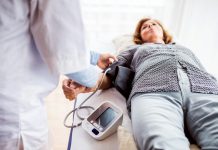
A groundbreaking study from the Feinberg School of Medicine at Northwestern University, Illinois, has revealed that home-based walking exercises are more beneficial than supervised treadmill physical therapy for patients with lower extremity peripheral artery disease (PAD).
This research was published in JAMA Network Open.
The study involved a comparative analysis of data from five randomized clinical trials conducted between 2009 and 2022, focusing on exercise therapy for PAD.
This condition affects the blood vessels outside the heart and brain and is often characterized by pain and mobility issues.
Three of these trials compared supervised treadmill exercises to a control group (370 participants), and two compared home-based walking exercises to a control group (349 participants).
All participants underwent a 6-Minute Walk (6MW) test, a standard assessment measuring the distance walked in six minutes to evaluate functional capacity in individuals with various medical conditions.
The findings were compelling. Participants in the home-based walking exercise group improved their 6MW distance by an average of 50.7 meters, significantly outperforming the supervised treadmill group, which showed an improvement of 32.9 meters compared to the control group.
This suggests that home-based exercises are more effective in enhancing the real-world walking ability of PAD patients.
Interestingly, while supervised treadmill exercises showed less improvement in the 6MW test, these participants exhibited a greater improvement in maximum treadmill walking distance.
This discrepancy indicates that treadmill-based gains might not directly translate to everyday walking activities, although they could offer benefits in other areas like cardiovascular health.
The practicality of supervised exercise sessions is often limited by factors such as the need for travel, co-payment requirements under many health insurance plans, and limited availability of treatment locations. These barriers contribute to low participation rates in supervised programs.
In contrast, home-based exercise programs offer the flexibility and convenience of being conducted in or around one’s own home, without the need for an exercise physiologist or coach present during each session.
This approach eliminates the burdens of cost and travel, making it a more accessible option for many patients.
The study’s findings advocate for home-based walking exercises as not only a superior alternative to supervised sessions but as a first-line therapy for addressing walking limitations in PAD patients.
This highlights the importance of considering patient convenience and practicality in treatment plans, potentially leading to better health outcomes and quality of life for those with PAD.
If you care about heart disease, please read studies that herbal supplements could harm your heart rhythm, and how eating eggs can help reduce heart disease risk.
For more information about heart health, please see recent studies that apple juice could benefit your heart health, and results showing yogurt may help lower the death risks in heart disease.
The research findings can be found in JAMA Network Open.
Copyright © 2023 Knowridge Science Report. All rights reserved.



